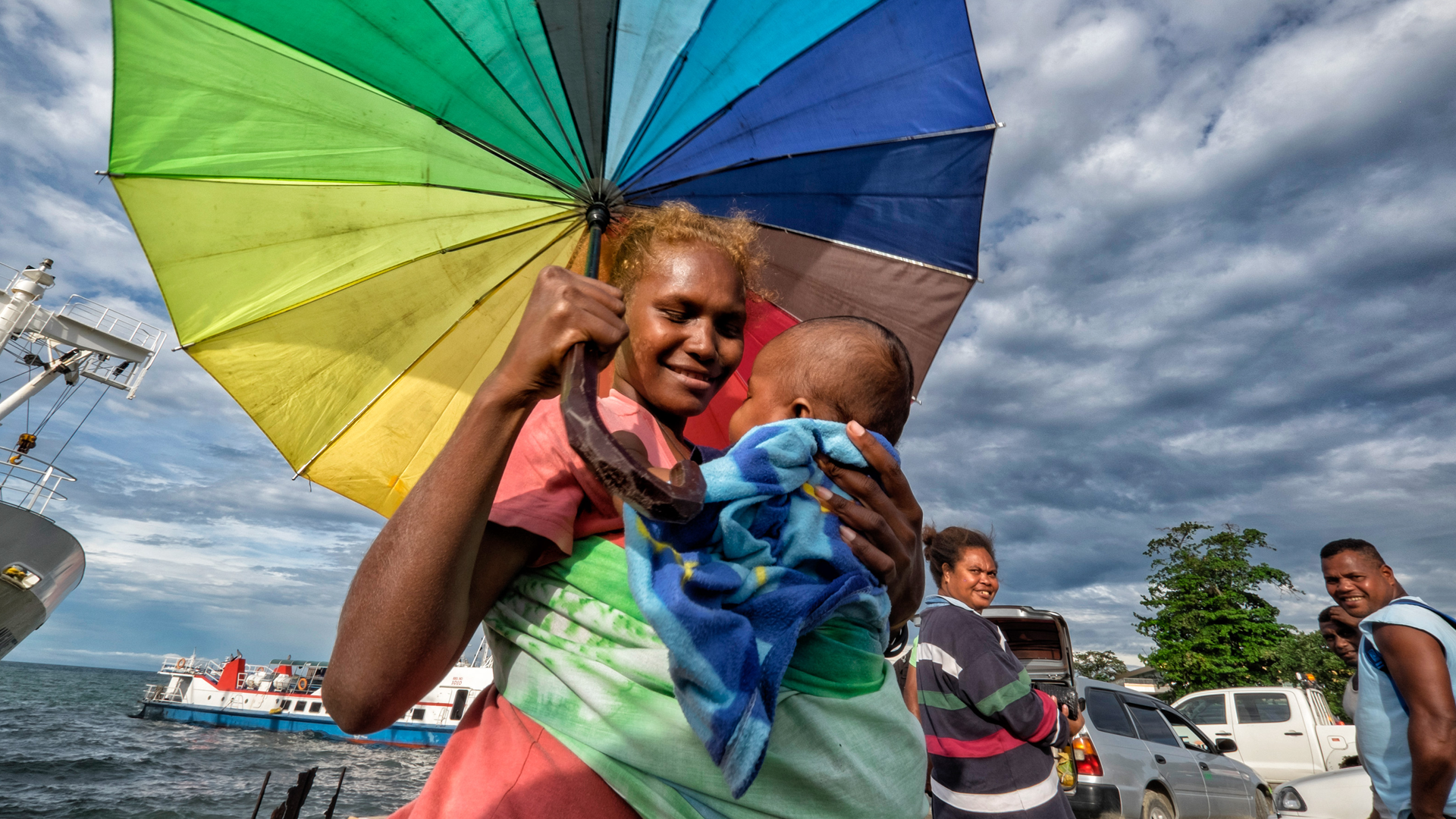Turning on the Tap in Solomon Islands
Poverty, a rapidly growing urban population, and vulnerability to disasters challenge the water and sewer network of Solomon Islands. Classified as a least developed country by the United Nations, the island nation’s economy grew following civil tensions from 1998 to 2003 but contracted in 2020 because of the COVID-19 pandemic.
Projections indicate that the country’s urban population may grow to 430,000 by 2050 from its current population of about 185,000. This rapid urban growth will hinder access to urban services. About a third of the nation’s urban population lives in rapidly expanding informal settlements. They get their drinking water from public water supply schemes, rainwater tanks, public wells, springs, streams, and other sources, such as bottled water.
In the Greater Honiara Area (GHA), the country’s biggest urban hub, about 41% do not have access to the city’s public water supply system, and about 24% do not have access to basic sanitation. In other urban areas, access to water and sanitation is even lower. As a result, more people fall prey to waterborne diseases in Solomon Islands than in most Pacific Islands.
Moreover, the nation’s water sources are unsustainable and threatened by disasters. For example, cyclones and earthquakes have regularly battered Solomon Islands. These events can disrupt the country’s water supply, especially in urban areas. Estimates show that the country loses about $20 million every year due to damages incurred by cyclones and earthquakes. These losses may increase as more extreme weather events will likely batter the country due to climate change.
Better Water Supply and Sanitation
To address this problem, ADB, along with the European Union and the World Bank, cofinanced the Urban Water Supply and Sanitation Sector Project, a sector-wide approach to improve water supply and sanitation in the GHA and five other towns: Auki, Gizo, Noro, Munda, and Tulagi.
The project supports the government’s goal of providing all Solomon Islanders with access to basic services. It is helping the Solomon Islands Water Authority (SIWA), the state-owned enterprise mandated to develop and manage urban water supply and sewerage services in the country.
“Far too many Solomon Islanders do not have access to safe water and basic sanitation, and it is those in greatest hardship that suffer the most. Upgrading and expanding critical water and sewerage infrastructure will help communities reduce reliance on rainwater and groundwater, improve access to safe water and improved sanitation, and foster better hygiene behaviors and water conservation,” said Stephen Blaik, water supply and sanitation specialist at ADB.
Upgrading and expanding critical water and sewerage infrastructure will help communities reduce reliance on rainwater and groundwater, improve access to safe water and improved sanitation, and foster better hygiene behaviors and water conservation.
– Stephen Blaik, ADB water supply and sanitation specialist
Sustainable water supply
In the GHA, sustainable water supply is hard to come by. SIWA’s non-revenue water (NRW)—water loss and unpaid in the distribution system—is high at about 50% of water production. In addition, SIWA services about 12,500 households in the area. The project intends to change these by reducing the NRW to 30% and expanding SIWA’s service in the GHA from 8,000 to 16,500, equivalent to 65% of its population. The project is upgrading existing water facilities, building new ones, and repairing pipe networks to provide the GHA and nearby peri-urban areas with reliable and sustainable water supply.
The project aims to upgrade a water treatment facility in Kongulai; build treated water trunk mains and two new reservoirs in the Mataniko and White River areas; upgrade water systems in Auki, Noro, and Tulagi; and build new water systems in Gizo and Munda. It has also targeted the leak detection and repair of 10-kilometer (km) water pipes and added 70 km new water pipes in the GHA. New metered collections and upgrading of existing ones will also be done.
Improved sewerage services
GHA’s sewer network is quite old and needs maintenance. It is about 36 km long, with 15 discrete gravity collection systems. Thirteen of these discharge to the ocean while two discharge to the river. It has deteriorated severely—discharging raw sewage to beaches and rivers, thus posing health and environmental hazards to the city. The project aims to upgrade the network to reduce the outfalls and expand its coverage from less than 1,000 to at least 4,000 residential and mostly non-residential properties. Thus, the project will upgrade three ocean outfalls and build a new one. It will also build six new sewage pump stations, rehabilitate two sewage pump stations, and construct a new septage treatment facility.
Potential Results
The changes the project brings to Solomon Islands will ensure the efficiency, disaster resiliency, and sustainability of water and sanitation services in the GHA and the towns of Auki, Gizo, Noro, Munda, and Tulagi. By 2027, these interventions will reduce the NRW in the GHA by 30%, and more properties will have piped water supply. About 20% of the households in the GHA will also be connected to the sewer network, while 64% (14,000 households) will have improved access to on-site sanitation policies and fecal sludge management. Three water systems will also be upgraded in Auki, Noro, and Tulagi, while two new ones will be built in Gizo and Munda.
Beyond the construction and the upgrades to water and sanitation facilities, the project aims to improve SIWA’s water and sanitation services administration. The water utility will have better financial management policies, capacity-building programs and incentive schemes for its staff, preventive maintenance programs and asset management, and an expanded telemetry system when the project ends. These will enable SIWA to recover its operations and maintenance costs, ensuring its good financial standing.
Cost
$92.8 million
- ADB Resources $37 million
- Government $20.5 million
Cofinancing Partners
- European Union (Grant) $20.3 million
- World Bank (Loan) $15 million
Dates
Approval Date 25 August 2019
Signing Date 27 September 2019
Completion Date 31 December 2027


